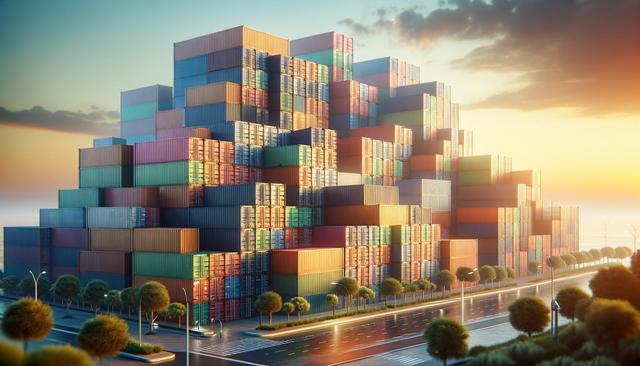Transforming Unsold Shipping Containers into Secure Storage Solutions
Unsold shipping containers are finding new life as practical and secure storage solutions. Their solid steel construction, originally designed to withstand harsh marine conditions, makes them highly resistant to weather, pests, and theft. This durability makes them a smart choice for a wide range of storage needs, from agricultural equipment and construction materials to seasonal retail inventory and personal belongings.
Unlike traditional storage sheds or rented units, shipping containers offer a more robust and customizable alternative. They can be placed on-site for easy access, minimizing the need for off-site storage solutions. Some of the key benefits of using shipping containers for storage include:
- Weatherproof and wind-resistant design
- Customizable size options to match specific storage demands
- Easy relocation and stacking for space optimization
- Lower long-term costs compared to monthly rental fees
With minimal modification, these containers can also be equipped with ventilation, shelving, or climate-control features, increasing their utility for sensitive items such as electronics or perishables.
Creating Functional Mobile Office Spaces
In response to growing demand for flexible work environments, shipping containers are increasingly being converted into mobile offices. Their portability makes them ideal for construction sites, remote areas, and temporary project locations. With some thoughtful planning, a basic container can be transformed into a well-equipped office featuring insulation, lighting, air conditioning, and secure access.
Mobile offices made from shipping containers can include:
- Private workstations or meeting rooms
- Wi-Fi connectivity and office equipment
- Built-in storage and filing systems
- Eco-friendly options like solar panels or rainwater collection
These workspaces are especially useful for industries that require mobility and quick deployment, such as oil and gas, event management, and disaster response teams. Their rugged design ensures a safe and stable environment, even in challenging conditions.
Innovative Housing and Living Spaces
One of the most eye-catching trends in recent years is the use of shipping containers for residential purposes. Their modular structure allows for creative layouts, and multiple containers can be joined together to create larger, multi-room homes. With proper insulation, windows, and interior finishing, these steel structures can become fully functional and stylish living spaces.
Features that make container homes appealing include:
- Cost-effective construction compared to traditional housing
- Quick build times with minimal environmental impact
- Customizable interiors with modern finishes
- Potential for off-grid living with sustainable upgrades
Container homes are gaining popularity among individuals looking for minimalist lifestyles, vacation rentals, and even emergency housing solutions. Their durability and adaptability make them a compelling choice for those seeking unconventional yet practical living arrangements.
Commercial and Retail Applications
Businesses are also unlocking the potential of unsold shipping containers by adapting them for commercial and retail purposes. Pop-up shops, food stalls, and mobile showrooms can be designed using containers, offering a unique and memorable customer experience. Their industrial aesthetic appeals to modern design trends, and the ease of transportation allows businesses to reach diverse markets.
Some practical commercial uses for shipping containers include:
- Retail pop-ups at markets or festivals
- Mobile cafes, food stands, and bars
- Product display units at trade shows
- Workshops or maker spaces
These applications provide a low-risk, flexible way for entrepreneurs to test markets, expand their reach, or launch new concepts without the overhead of leasing permanent space. The adaptability of containers supports a wide range of business models and creative expressions.
Eco-Conscious and Sustainable Development
Repurposing unsold shipping containers aligns with eco-friendly practices and sustainable development goals. By giving a second life to these steel structures, individuals and organizations contribute to reducing industrial waste and conserving resources. The reuse of containers minimizes the need for new building materials, lowering the project’s carbon footprint.
Additional sustainable features that can be integrated into container-based builds include:
- Green roofs or vertical gardens
- Efficient insulation and passive cooling systems
- Solar power installations
- Rainwater harvesting and greywater recycling
These enhancements not only reduce environmental impact but also promote self-sufficiency and lower utility costs over time. Whether used for homes, offices, or retail spaces, the combination of sustainability and functionality makes shipping containers an attractive building block for modern, responsible development.
Conclusion: A New Life for Old Containers
Unsold shipping containers offer a world of possibilities beyond their original purpose. From secure storage and mobile offices to innovative housing and commercial spaces, these durable structures are being reimagined in exciting ways. Their affordability, resilience, and adaptability make them a practical solution for a wide range of industries and personal projects. By choosing to repurpose containers, individuals not only unlock creative potential but also support more sustainable and efficient construction practices. If you’re looking for a bold and practical foundation for your next venture, consider starting with a steel box that’s ready for transformation.






